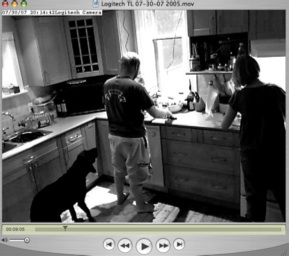In May 2008, thousands of South Koreans took to the streets to protest the impending importation of U.S. beef. In a classic example of the social amplification of risk theory, citizens were apparently convinced that substandard beef was headed for South Korea and they would all develop mad cow disease.
.jpg) Now, some citizens are fighting back.
Now, some citizens are fighting back.
JoonAng Daily reports that more than 1,000 Korean-Americans filed a group lawsuit against a Korean broadcaster yesterday, claiming its coverage of the supposed health risks of U.S. beef humiliated them and subjected them to mockery in the United States.
In April last year, Seoul-based MBC broadcast a report on U.S. beef warning that consumption of the meat may lead to the human form of mad cow disease. Following the airing of the “PD Diary” episode, tens of thousands of South Koreans took to the streets to protest a Seoul-Washington agreement that reopened the Korean beef market to U.S. products.
The protests continued for months, rattling the new Lee Myung-bak administration. …
“We demand that MBC and the chief producer of PD Diary pay for the psychological damage and broadcast a correction report and an apology,” said Lee Heon, legal representative of the group. …
Lee said the plaintiffs were insulted by PD Diary as its report insinuated that anyone who eats U.S. beef will contract the human form of mad cow disease. He also argued that because of the report, people living in Korea came to look down on overseas Koreans who have eaten U.S. beef for years.
And every time I hear of some frivolous story about mad cow disease – not the serious stories where innocent people die – I think of this 1995 song by Vancouver band, The Odds.

 Other reports said
Other reports said.gif) That deal, coupled with some sensational media reports, sparked fears of mad cow disease and triggered weeks of near-daily street protests calling for scrapping and renegotiating the agreement (left, protesters carry a sign symbolizing U.S. beef infected by mad cow disease, from Reuters).
That deal, coupled with some sensational media reports, sparked fears of mad cow disease and triggered weeks of near-daily street protests calling for scrapping and renegotiating the agreement (left, protesters carry a sign symbolizing U.S. beef infected by mad cow disease, from Reuters)..jpg) "while more than three-quarters of Americans (82%) say they are confident in their ability to safely prepare food, many do not take steps to reduce the spread of bacteria in their kitchen. For instance, less than half (48%) report using separate cutting boards for raw meat or poultry and produce, and just 29% say they use a meat thermometer. … Most (92%) report washing their hands with soap and water when preparing food, and nearly as many (79%) say they store leftovers within two hours of serving. But just 15% report checking the wattage on their microwaves, and even fewer (7%) say they use a meat thermometer when using their microwave."
"while more than three-quarters of Americans (82%) say they are confident in their ability to safely prepare food, many do not take steps to reduce the spread of bacteria in their kitchen. For instance, less than half (48%) report using separate cutting boards for raw meat or poultry and produce, and just 29% say they use a meat thermometer. … Most (92%) report washing their hands with soap and water when preparing food, and nearly as many (79%) say they store leftovers within two hours of serving. But just 15% report checking the wattage on their microwaves, and even fewer (7%) say they use a meat thermometer when using their microwave."

 The U.S. implemented a ban on haggis from Scotland in 1989 amidst the bovine spongiform encephalopathy [mad cow] scare because the dish contains offal ingredients such as sheep lungs. Sheep can suffer from scrapie, which is in the same family of diseases as BSE.
The U.S. implemented a ban on haggis from Scotland in 1989 amidst the bovine spongiform encephalopathy [mad cow] scare because the dish contains offal ingredients such as sheep lungs. Sheep can suffer from scrapie, which is in the same family of diseases as BSE.
.jpg) While introducing a Senate motion to block the movement of older Canadian cattle into the U.S., U.S. Senator Byron Dorgan (D-ND) couldn’t help himself and played the "
While introducing a Senate motion to block the movement of older Canadian cattle into the U.S., U.S. Senator Byron Dorgan (D-ND) couldn’t help himself and played the ".jpg) Ninety-one percent of American adults say they always wash their hands after using public restrooms. But just 83 percent actually did so, according to a separate observational study.
Ninety-one percent of American adults say they always wash their hands after using public restrooms. But just 83 percent actually did so, according to a separate observational study. USA Today
USA Today